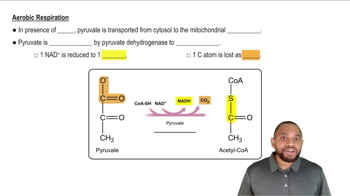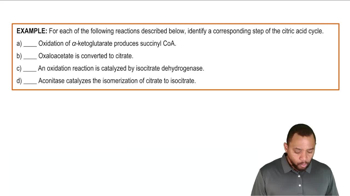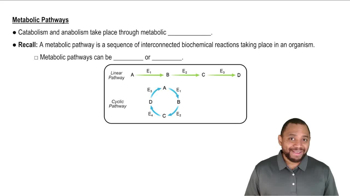Here are the essential concepts you must grasp in order to answer the question correctly.
Pyruvate Decarboxylation
Pyruvate decarboxylation is a crucial metabolic process that occurs in the mitochondria, where pyruvate, a three-carbon compound derived from glucose, is converted into acetyl CoA, a two-carbon molecule. During this reaction, one carbon atom is removed from pyruvate in the form of carbon dioxide (CO2), which is released as a byproduct. This step is essential for linking glycolysis to the citric acid cycle.
Recommended video:
Pyruvate Oxidation Concept 2
Acetyl CoA
Acetyl CoA is a central metabolite in cellular respiration, serving as a key substrate for the citric acid cycle (Krebs cycle). It is formed from the decarboxylation of pyruvate and plays a vital role in energy production, as it enters the cycle to be oxidized for ATP generation. Acetyl CoA can also be derived from fatty acids and amino acids, highlighting its importance in metabolism.
Recommended video:
Phase B - Succinyl CoA Formation Example 2
Carbon Loss in Metabolism
The loss of carbon during metabolic processes, such as the conversion of pyruvate to acetyl CoA, is a common occurrence in cellular respiration. This loss typically happens through decarboxylation, where carbon atoms are released as CO2. Understanding this concept is essential for grasping how organisms extract energy from nutrients and the overall flow of carbon in metabolic pathways.
Recommended video:
Metabolic Pathways Concept 2
 Verified step by step guidance
Verified step by step guidance Verified Solution
Verified Solution



 1:49m
1:49m